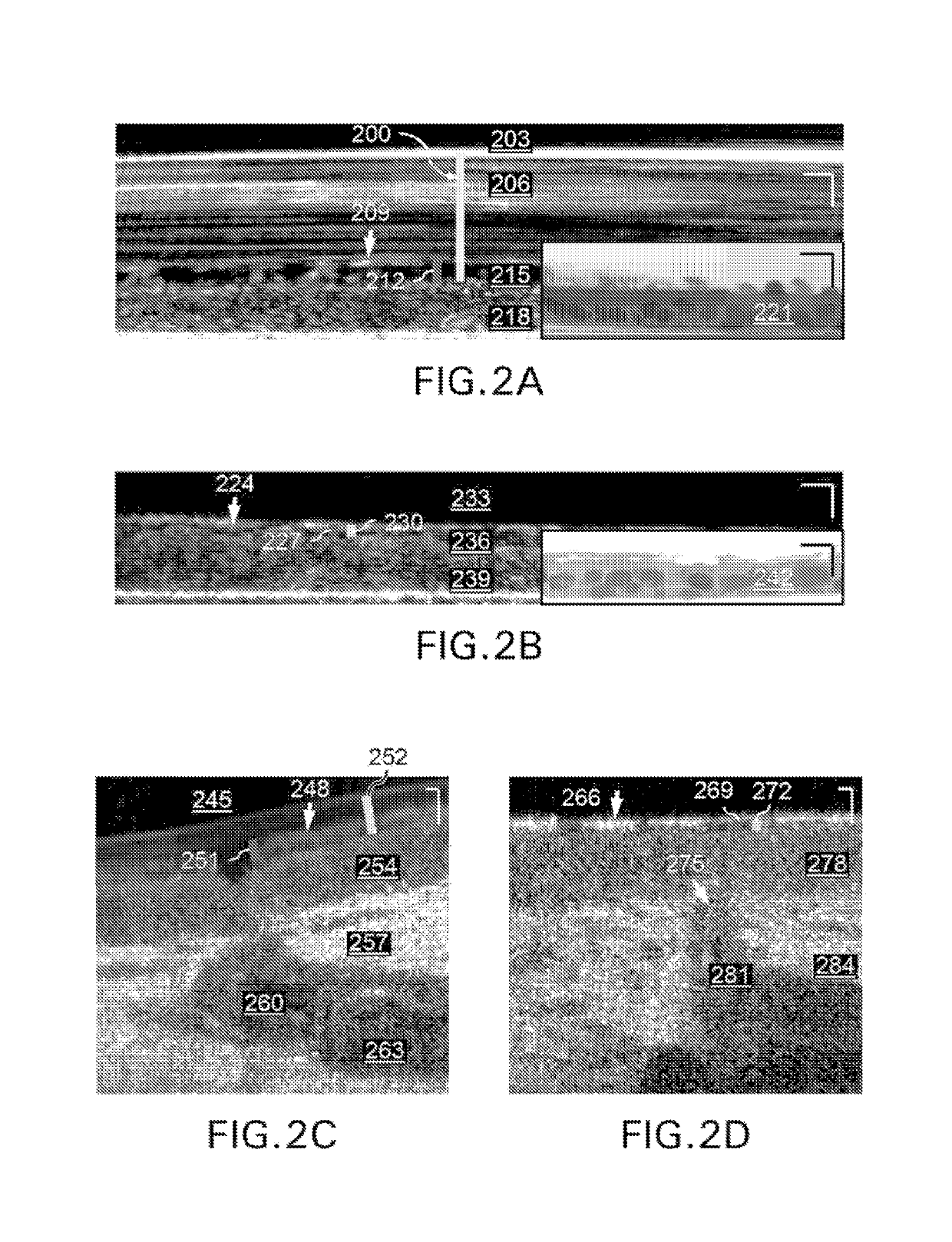Methods, systems, arrangements and computer-accessible medium for providing micro-optical coherence tomography procedures
a technology of coherence tomography and computer access, applied in the field of methods, systems, arrangements and computer accessible medium for providing micro-optical coherence tomography procedures, can solve the problems of morbidity and early mortality, impaired mucociliary clearance and susceptibility to recurrent sinopulmonary infections, and the mucus itself is difficult to understand, so as to facilitate the tracking of mucus microrheology, facilitate understanding, and recover mucus viscosity
- Summary
- Abstract
- Description
- Claims
- Application Information
AI Technical Summary
Benefits of technology
Problems solved by technology
Method used
Image
Examples
Embodiment Construction
[0022]Thus, at least some of the above-described issues and / or deficiencies can be addressed with the exemplary embodiments of the by providing exemplary methods, systems, arrangements and computer-accessible medium for providing micro-optical coherence tomography procedures.
[0023]For example, according to certain exemplary embodiments of μOCT system, method, arrangement and computer-accessible medium can provide a high spatial resolution and frame rate reported to date. With such exemplary embodiment of the methods, systems, arrangements and computer-accessible medium according to the present disclosure, cross-sectional images of tissue can be acquired at about 44 frames per second (fps) at an axial resolution of 1.5 μm and a transverse resolution of 2 μm. The size of a typical μOCT image can be about 3 mm×0.6 mm. Such exemplary embodiments of the methods, systems, arrangements and computer-accessible medium can facilitate, e.g., a simultaneous and high-resolution acquisition of ci...
PUM
| Property | Measurement | Unit |
|---|---|---|
| diameter | aaaaa | aaaaa |
| diameter | aaaaa | aaaaa |
| diameter | aaaaa | aaaaa |
Abstract
Description
Claims
Application Information
 Login to View More
Login to View More - R&D
- Intellectual Property
- Life Sciences
- Materials
- Tech Scout
- Unparalleled Data Quality
- Higher Quality Content
- 60% Fewer Hallucinations
Browse by: Latest US Patents, China's latest patents, Technical Efficacy Thesaurus, Application Domain, Technology Topic, Popular Technical Reports.
© 2025 PatSnap. All rights reserved.Legal|Privacy policy|Modern Slavery Act Transparency Statement|Sitemap|About US| Contact US: help@patsnap.com



